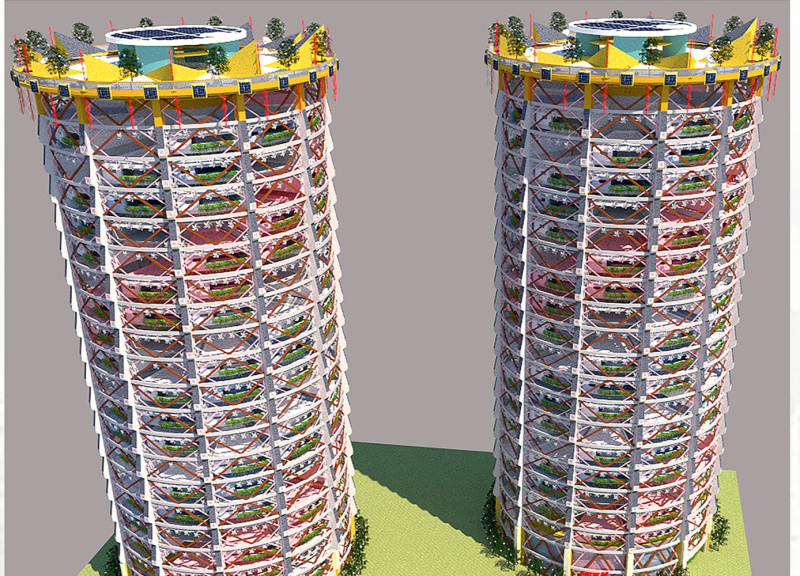5 key facts about this project
RE-Stock London Housing presents a new approach to urban living in the high-density environment of London. The design concept steers clear of traditional corridor layouts, opting instead for an open arrangement that enhances living space and promotes social interaction among residents. This focus on flexibility and sustainability aims to meet the demands of modern housing, rethinking how community life can work in urban settings.
Vertical and Horizontal Movement
Advanced movement systems play a crucial role in the design. Elevators not only transport residents to their units but also bring living spaces closer when needed. This feature significantly improves accessibility, especially for people with limited mobility. By ensuring that every resident can easily engage with their surroundings, the design addresses practical needs while enhancing the overall living experience.
Material Utilization
The building predominantly uses Hemcrete for its structure, reflecting a commitment to environmentally friendly building practices. This material adds to the project’s energy efficiency while supporting a sustainable approach to construction. Moreover, the HVAC system is placed outside the individual units, allowing for better use of internal spaces and ensuring effective heating and cooling.
Community-Focused Design
The design encourages community living by incorporating shared spaces that residents can rent, such as dining areas, kitchens, and recreational rooms. These shared facilities foster social connections and reduce the maintenance required for unused private areas. Balancing private living with communal spaces allows residents to adapt their living arrangements to better fit their needs over time.
Sustainable Features
Sustainability is a key aspect, with features like solar panels and LED lighting powered by locally generated electricity. Smart glass technology is used to enhance energy efficiency and data handling. The rooftop includes vertical wind turbines and landscaped gardens, creating outdoor spaces that promote a connection to nature. This thoughtful inclusion of green elements reinforces the overall commitment to sustainable urban living.























































